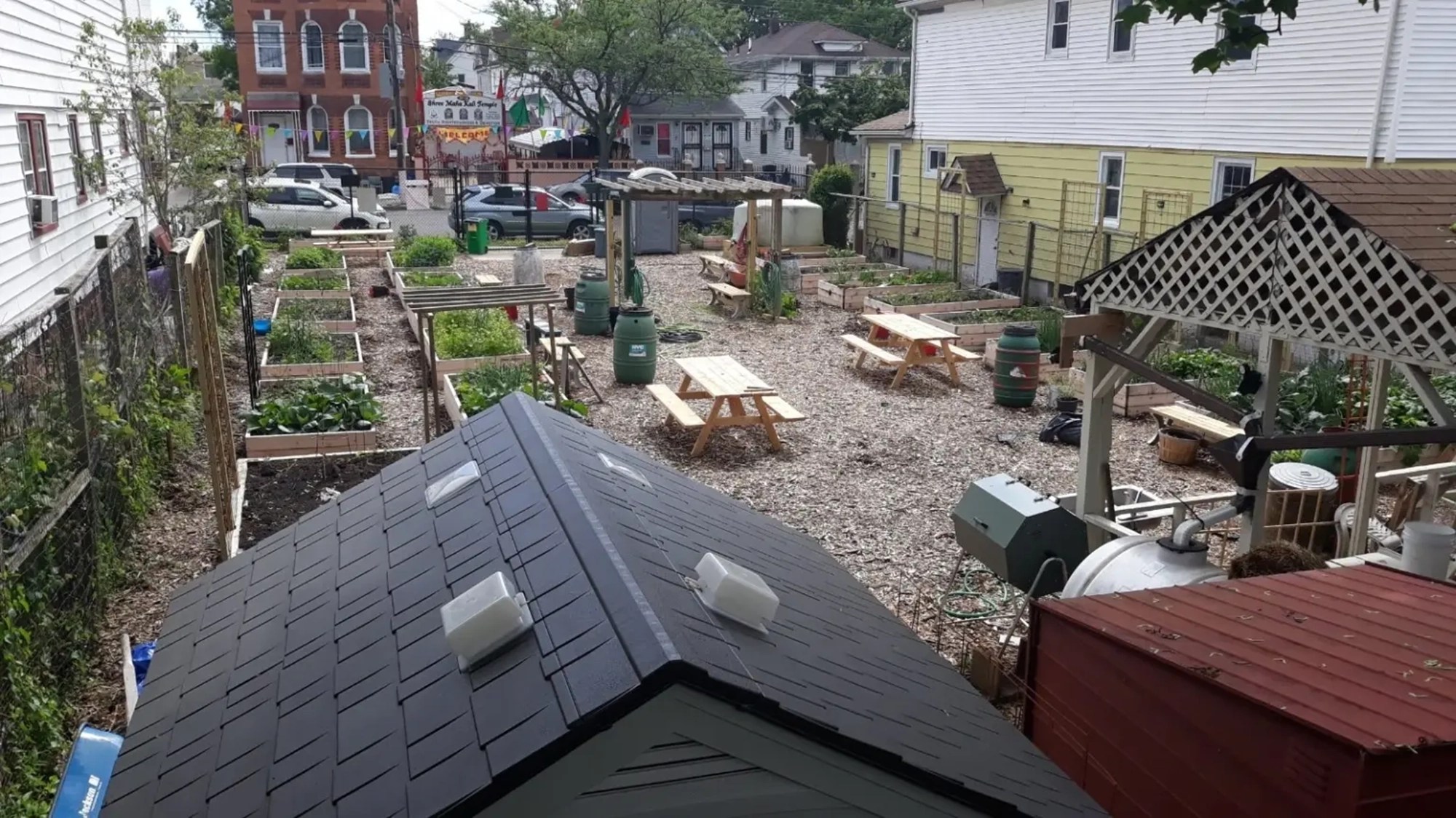A Surprisingly Powerful Tool to Make Cities More Livable – Mother Jones

Report on Urban Agriculture’s Contribution to Sustainable Development Goals
Introduction: Urban Farming as a Multifaceted Solution for Sustainable Cities
Urban agriculture is emerging as a critical strategy for advancing the United Nations Sustainable Development Goals (SDGs). By integrating food production into urban landscapes through initiatives like community gardens and rooftop agrivoltaics, cities can simultaneously address challenges related to food security, public health, clean energy, and climate resilience. This report analyzes the role of urban agriculture in creating sustainable, inclusive, and resilient communities, directly contributing to SDG 11 (Sustainable Cities and Communities) and a range of interconnected goals.
Advancing Food Security and Public Health (SDG 2 & SDG 3)
Addressing Urban Food Insecurity and Nutrition
Urban farming provides a direct pathway to achieving SDG 2 (Zero Hunger) by improving access to fresh, nutritious food in urban centers. Many city populations suffer from “silent hunger,” where caloric intake is sufficient but nutritional value is low. Community-based agriculture helps close this gap.
- Local Food Production: Initiatives in Quezon City (Philippines) and Detroit (USA) demonstrate how converting unused land into gardens and farms can significantly boost local food supplies.
- Nutritional Diversity: Unlike rural monocultures, urban farms can cultivate a wide variety of crops, such as squash, snap peas, and lemongrass, providing a diverse range of nutrients to local communities.
- Scalable Impact: A model for São Paulo, Brazil, indicated that converting available urban space to farms could supply necessary fruits and vegetables for up to 21% of the city’s population, highlighting the potential for large-scale contributions to SDG 2.
Promoting Good Health and Well-being
The presence of green spaces and the practice of urban farming yield significant benefits for SDG 3 (Good Health and Well-being). Organizations like Project Petals in New York City transform vacant lots into community oases that serve multiple health functions.
- Mental Health: Green spaces are proven to reduce stress and combat loneliness, providing essential mental health support in dense urban environments.
- Physical Health: Proximity to gardens improves respiratory and heart health.
- Community Engagement: These spaces act as hubs for education and social interaction, fostering community cohesion and empowering residents with skills in food cultivation.
Fostering Climate Action and Sustainable Urban Environments (SDG 13, SDG 11, SDG 7, SDG 15)
Building Climate Resilience in Cities
Urban agriculture is a potent tool for climate adaptation and mitigation, directly supporting SDG 13 (Climate Action) and SDG 11 (Sustainable Cities and Communities).
- Mitigating Urban Heat Island Effect: The built environment absorbs and radiates heat, creating dangerously high temperatures. Greenery from urban farms reduces ambient temperatures through evapotranspiration and shade.
- Improving Stormwater Management: Permeable surfaces in urban gardens absorb heavy rainfall, mitigating flood risk—a growing threat due to climate change.
- Enhancing Biodiversity: The cultivation of diverse plant species in urban farms provides critical habitats and food sources for pollinators, contributing to SDG 15 (Life on Land) and creating a virtuous cycle of improved crop yields.
Rooftop Agrivoltaics: A Synergy for Energy and Food
Rooftop agrivoltaics, the co-location of solar panels and crops, presents an innovative solution that addresses multiple SDGs simultaneously. Research at Colorado State University highlights a symbiotic system with numerous benefits:
- Clean Energy Generation (SDG 7): Solar panels produce clean electricity, reducing urban reliance on fossil fuels.
- Enhanced Crop Growth (SDG 2): The shade from panels creates a microclimate that allows certain crops, like leafy greens and saffron, to thrive while reducing water evaporation.
- Increased Energy Efficiency: Water vapor released by plants cools the solar panels, increasing their operational efficiency.
- Extended Growing Seasons: The urban heat island effect, combined with the protection of agrivoltaic systems, can extend growing seasons for high-value crops like zucchini and watermelon.
Conclusion: An Integrated Strategy for Global Goals
Urban agriculture is more than just growing food in cities; it is a powerful, integrated strategy for achieving a sustainable future. By transforming underutilized urban spaces, cities can make significant progress on a wide array of Sustainable Development Goals. These initiatives enhance food security (SDG 2), promote health (SDG 3), generate clean energy (SDG 7), build resilient and sustainable communities (SDG 11), combat climate change (SDG 13), and protect biodiversity (SDG 15). As the global population becomes increasingly urbanized, scaling these simple yet effective solutions will be crucial for creating healthier and more sustainable cities for all.
1. Identified Sustainable Development Goals (SDGs)
SDG 2: Zero Hunger
- The article extensively discusses how urban agriculture can “improve food security” and provide nutritious food. It addresses the issue of “silent hunger,” where people lack nutrients despite having enough calories, and highlights how community gardens can provide a “cornucopia of nutritious foods” to underserved neighborhoods.
SDG 3: Good Health and Well-being
- The text explicitly states that green spaces “improve mental and physical health for urbanites.” It quotes Alicia White from Project Petals, who notes that these spaces “help to reduce stress,” “combat loneliness,” and “improve our respiratory and heart health.”
SDG 7: Affordable and Clean Energy
- The concept of “rooftop agrivoltaics,” which combines solar panels with agriculture, is a central theme. The article mentions this technique can “generate clean electricity” and that the cooling effect of the plants can increase the efficiency of the solar panels.
SDG 11: Sustainable Cities and Communities
- The entire article focuses on making urban areas more sustainable and livable. It describes initiatives that transform “unused land” and “vacant lots” into green spaces and farms. These projects help reduce the “urban heat island effect,” manage extreme rainfall to lower flood risk, and provide accessible green spaces in neighborhoods that lack them.
SDG 13: Climate Action
- Urban agriculture is presented as a “potent climate solution.” The article explains how green spaces help cities adapt to climate change by reducing temperatures during “prolonged heat waves” and helping to “soak up deluges” from extreme rainfall, thereby “reducing the risk of flooding.”
SDG 15: Life on Land
- The article touches on biodiversity by mentioning that urban gardens can “provide refuges for pollinators.” It explains that a diversity of plant species supports pollinators, which in turn helps crops and native plants reproduce, creating a “virtuous cycle.”
2. Specific SDG Targets
SDG 2: Zero Hunger
- Target 2.1: End hunger and ensure access to safe, nutritious, and sufficient food. The article supports this by describing how urban farms provide fresh, healthy food in “underresourced neighborhoods” and address unequal access to proper nutrition, directly combating “silent hunger.”
- Target 2.4: Ensure sustainable food production systems and implement resilient agricultural practices. The article highlights rooftop agrivoltaics and diverse community gardens as resilient practices that save water, enrich soil, and can thrive in urban environments.
SDG 3: Good Health and Well-being
- Target 3.4: Promote mental health and well-being. The article directly links urban green spaces to improved health outcomes, stating they “improve mental and physical health,” “reduce stress,” and “combat loneliness.”
SDG 7: Affordable and Clean Energy
- Target 7.2: Increase substantially the share of renewable energy in the global energy mix. The discussion of “rooftop agrivoltaics” where solar panels “generate clean electricity” is a direct contribution to this target.
SDG 11: Sustainable Cities and Communities
- Target 11.6: Reduce the adverse per capita environmental impact of cities. The article explains how urban gardens mitigate the “urban heat island effect,” reduce energy costs for cooling buildings, and manage stormwater.
- Target 11.7: Provide universal access to safe, inclusive and accessible, green and public spaces. The work of Project Petals is cited as an example of creating green “oases” in areas where “there’s not a green space for 5 miles.”
SDG 13: Climate Action
- Target 13.1: Strengthen resilience and adaptive capacity to climate-related hazards. The article details how urban gardens build resilience by reducing local temperatures during heat waves and absorbing excess water from extreme rainfall to mitigate flooding.
SDG 15: Life on Land
- Target 15.5: Halt the loss of biodiversity. The article’s mention of urban farms providing “refuges for pollinators” and supporting their reproduction through plant diversification connects directly to protecting and restoring biodiversity.
3. Mentioned or Implied Indicators
SDG 2: Zero Hunger
- Number of urban farms and gardens created: The article provides concrete numbers, such as Quezon City transforming unused land into “more than 300 gardens and 10 farms.”
- Number of people trained in urban agriculture: It is mentioned that Quezon City trained “more than 4,000 urban farmers.”
- Percentage of population provided with healthy food: A study in São Paulo is cited, which modeled that urban farms could provide “the missing fruits and vegetables for 13 to 21 percent of the population of the city.”
SDG 7: Affordable and Clean Energy
- (Implied) Increase in renewable energy generation in urban areas: The use of solar panels in agrivoltaics implies a measurable output of clean electricity.
- (Implied) Increase in solar panel efficiency: The article states that water from the soil “cools the panels, increasing their efficiency,” which is a measurable indicator.
SDG 11: Sustainable Cities and Communities
- Area of land converted to green space: The article mentions a theoretical scenario in São Paulo of turning “around 14 square miles” of free space into gardens.
- (Implied) Reduction in ambient temperature: The mitigation of the “urban heat island effect” implies a measurable decrease in local temperatures.
- (Implied) Reduction in building energy consumption: The insulating effect of greenery on top floors, which is said to be “reducing energy costs,” can be measured.
SDG 13: Climate Action
- (Implied) Reduction in flood-related damages: The capacity of urban gardens to “soak up deluges” implies a measurable reduction in stormwater runoff and flooding incidents.
SDG 15: Life on Land
- (Implied) Change in pollinator population counts: The creation of “refuges for pollinators” suggests that an increase in their populations could be monitored and measured.
4. Summary Table of SDGs, Targets, and Indicators
| SDGs | Targets | Indicators |
|---|---|---|
| SDG 2: Zero Hunger | 2.1 End hunger and ensure access to nutritious food. 2.4 Ensure sustainable and resilient food production. |
– Number of urban farms/gardens created (e.g., “300 gardens and 10 farms”). – Number of urban farmers trained (e.g., “4,000 urban farmers”). – Percentage of population provided with healthy food (e.g., “13 to 21 percent”). |
| SDG 3: Good Health and Well-being | 3.4 Promote mental health and well-being. | – (Implied) Surveys on community well-being, stress levels, and social connection in areas with new green spaces. |
| SDG 7: Affordable and Clean Energy | 7.2 Increase the share of renewable energy. | – (Implied) Amount of clean electricity generated from rooftop solar panels. – (Implied) Measured increase in solar panel efficiency. |
| SDG 11: Sustainable Cities and Communities | 11.6 Reduce the environmental impact of cities. 11.7 Provide access to green and public spaces. |
– Area of vacant land converted to green space (e.g., “14 square miles”). – (Implied) Reduction in local temperatures. – (Implied) Reduction in building energy consumption. |
| SDG 13: Climate Action | 13.1 Strengthen resilience to climate-related hazards. | – (Implied) Reduction in stormwater runoff and flooding incidents. – (Implied) Reduction in heat-related health issues. |
| SDG 15: Life on Land | 15.5 Halt the loss of biodiversity. | – (Implied) Change in pollinator population counts in urban areas. |
Source: motherjones.com
What is Your Reaction?
 Like
0
Like
0
 Dislike
0
Dislike
0
 Love
0
Love
0
 Funny
0
Funny
0
 Angry
0
Angry
0
 Sad
0
Sad
0
 Wow
0
Wow
0




















































.jpg.webp?itok=0ZsAnae9#)



























